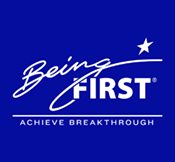One of the costliest mistakes in leading change is for leaders to ask something of the people in their organization and then not do it themselves. Walking the talk of change is not just a nice phrase; it has teeth! Organizational change, especially when it is transformational, sticks to the degree that leaders model it. In transformational change, the “Go change them!” (“and not me mandate!”) just won’t fly.
Some examples:
- If you want a high performing team-based culture, then the leadership team must become one.
- If you want collaboration across boundaries, then the leaders must visibly collaborate.
- If you want people to stop using their cellphones while driving, the leaders must also stop using them.
- If you want a learning organization, then leaders must promote learning through after-action debriefs and best practice sessions, rather than delivering reprimands for short-comings.
A Change in Leadership Style Is Required
Current leadership literature promotes movement away from the historically prevalent command and control style; however, that can be easier said than done. The unrelenting pressure for speed, cost-cutting, and meeting metrics can cause even more command and control and less attention to the “soft” human dynamics or leadership that demonstrates concern for people’s reactions and capacity to change. If your organization’s transformation calls for a culture of innovation, risk-taking, collaboration across boundaries, and shared accountability, a command and control style will likely become a direct inhibitor of your success.
Many of the changes occurring in today’s organizations require leaders to evolve their style and model a more co-creative and engaging approach.This requires leaders to be willing to look in the mirror and assess their current mindsets, behaviors, and styles to see if they are supporting or inhibiting the changes the organization needs to make. It requires them to recognize the stylistic factors that their future state requires of them and their stakeholders.
A New Way of Being for Leaders
Even with good intentions to motivate people to change faster,if leaders are not willing to address their own ways of being, such as a behavior or style clash with the vision and requirements of the future, they are personally reducing the speed and probability of success. For instance, leaders may mandate a change in structure, business process, or use of technology, and demand unrealistic timelines for implementation. They may threaten reprisal if change deadlines or budgets are not met. In so doing, they trigger fear, confusion, overwhelm, and resentment.
These approaches cause the people making the change to take their eyes off being smart about making the change, and instead force whatever change actions they can manage (e.g., “check the box”) and resent the pressure. To alter these approaches, leaders must first acknowledge that they have been using detrimental behaviors and mindsets, consciously or not. Once aware, they can use different approaches that befit their outcomes, thus raising their credibility in the minds of their stakeholders.
Not Your Traditional Change Management Approach
This work is outside the bounds of traditional change management methodology. Change management is usually focused on getting stakeholders to adopt new behaviors, not on leaders adopting new behaviors. This is why conscious change leadership is needed in all changes, but particularly transformational change. The conscious approach addresses change leadership success factors from the beginning of the change process. It enables leaders to become aware of the importance of authentically modeling the changes they want to make, and to go through the personal development to become advocates and visible examples of it.
Determining What Change Leaders Need to Model
Modeling change in thinking, behavior and style must be a top priority of change leaders when their future directions call for it. This is a key success requirement in transformational change. Their first challenge is to determine the behaviors and mindsets that the desired outcomes require to sustain value over time. One of the greatest catalysts for transformational change is people witnessing executives changing and behaving in ways that are directly congruent with the desired future state, and very different from the old ways. When the rest of the organization sees leaders personally changing their thinking, language, and actions, the conditions of personal safety, necessity, and courage to change are established for everyone else. Permission and positive expectation for behavioral change is set by leadership modeling.This has a far more powerful impact on stakeholders than seeing structural boxes move around or new technological tools being used.
What Mindsets and Behaviors Are Required of Transformational Change Leaders?
To determine the new mindsets, behaviors and cultural norms that your future state requires and to identify what currently blocks the new state from landing and thriving, visualize the organization living fully in the desired new state. In your ideal scenario:
- What are leaders doing and thinking?
- How are leaders interacting with each other and with stakeholders?
- How do you want your workers to view you and other leaders so that you are seen as positive models and aligned supporters of the new reality?
- What cultural norms are currently in play that will not allow the new state to take hold?
- What different norms are needed?
Once you have identified these things, name and act on them in your change strategy and plan. Help other leaders experience how to live them and make them overt in the organization. Their transformation is not just about the new structure or technology; it is about leading these changes in ways that the results you need will last.
Leaders First: Walk the Talk of the Change
Does this mean that your change must be driven top-down? Not necessarily. However, if your leaders do not, at some early stage in the process, begin to make and communicate observable personal changes, the effort will fail because people will not believe it is credible. They will point at the leaders and judge them—and the change initiative—as a ruse. Put simply, leaders must walk the talk of the change they are asking of the organization. If they do not, they will lose credibility in the eyes of the workforce and negate the possibility of the future they are trying to create. If they do, they are forging the way for their stakeholders to follow suit, and make the change a success.



